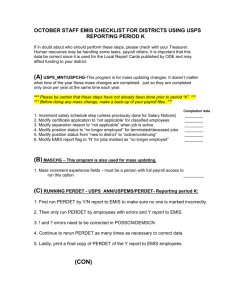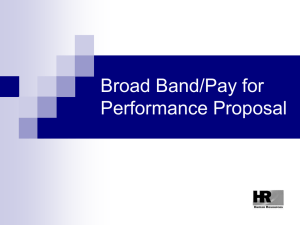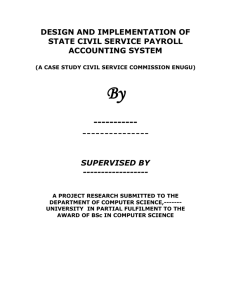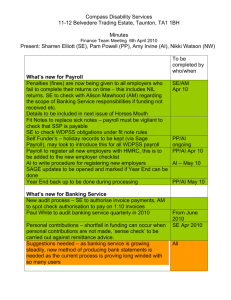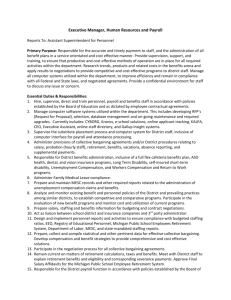Building Effective Teacher Salary Systems in FCAS
advertisement
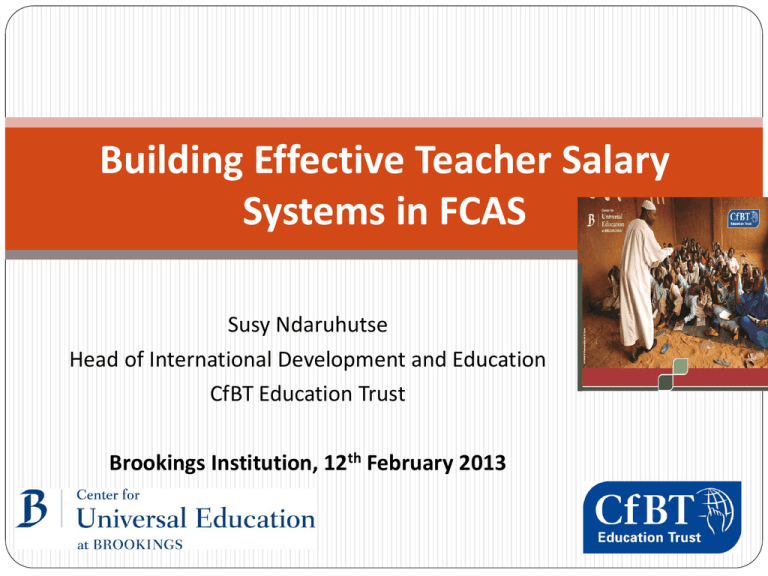
Building Effective Teacher Salary Systems in FCAS Susy Ndaruhutse Head of International Development and Education CfBT Education Trust Brookings Institution, 12th February 2013 Challenges and solutions Report identifies 17 of the major challenges to effective teacher salary systems as well as proposing a number of possible or tried and tested solutions to each of the challenges Three categories of solution: Incremental change 2. Step change 3. Bypassing the existing system 1. Solution 1: Contracting out salary payments Challenges Collapsed or non-existent banking system outside the capital Lack of trust or confidence in the banking system Cash-based payment system Sierra Leone example (bypasses existing system): international financial accounting firm sub-contracted to pay teachers. They charged a 10% service fee. Leakages reduced from 42% loss under the public sector to 8.5% under new arrangement. Solution 2: Mobile banking Challenges Collapsed or non-existent banking system outside the capital Lack of trust or confidence in the banking system Afghanistan example (bypasses existing system): potential for using mobile money networks (M- Paisa) to pay teachers’ salaries. Only 7% of the population has bank accounts yet 40% have mobile phones and 75% of country has network coverage. M-Paisa already been successfully piloted with the police force. Solution 3: Involving civil society Challenges Weak auditing system Limited access to financial information Example (incremental change): engaging civil society in budget work in education sector already been successfully employed in some FCAS including Nigeria, Pakistan, Sierra Leone and Sri Lanka. In Uganda, leakage of (non-salary) capitation grants from MoE to schools fell from 80% to 20% between 1995 and 2001 as a result of a public information campaign. Solution 4: Linking EMIS and payroll (1) Challenges Inadequate or incorrect records and payroll verification Inefficient or non-existent EMIS/TMS Southern Sudan example (incremental change): 2008 headcount gathered personal data, job grade, school, qualifications, career and operational info from teachers. Headcount, payroll and EMIS data were linked electronically. Result was proportional allocation of resources for teacher salaries between states. Solution 4: Linking EMIS and payroll (2) Sierra Leone example (step change): payroll data is triangulated by collecting photos of teachers and location where they teach; registering biometric data such as fingerprints and then cross-checking the identity of teachers by asking other teachers to identify the photos of teachers who claim to be working at the same school. Conclusion Teachers are most visible part of education system in FCAS Teacher salaries take up the super majority of the education budget More money is not enough Need early intervention and investment to build a sustainable teacher salary system Recommendations CONTEXT IS PARAMOUNT Use alternative payment channels to pay teachers in the short-term Invest in different building blocks of the teacher salary system Support interventions that impact more than one cog in the system Provide technical support to develop capacity of banking sector, national revenue authority and national audit office as well as supporting the development of information management and teacher payroll systems
